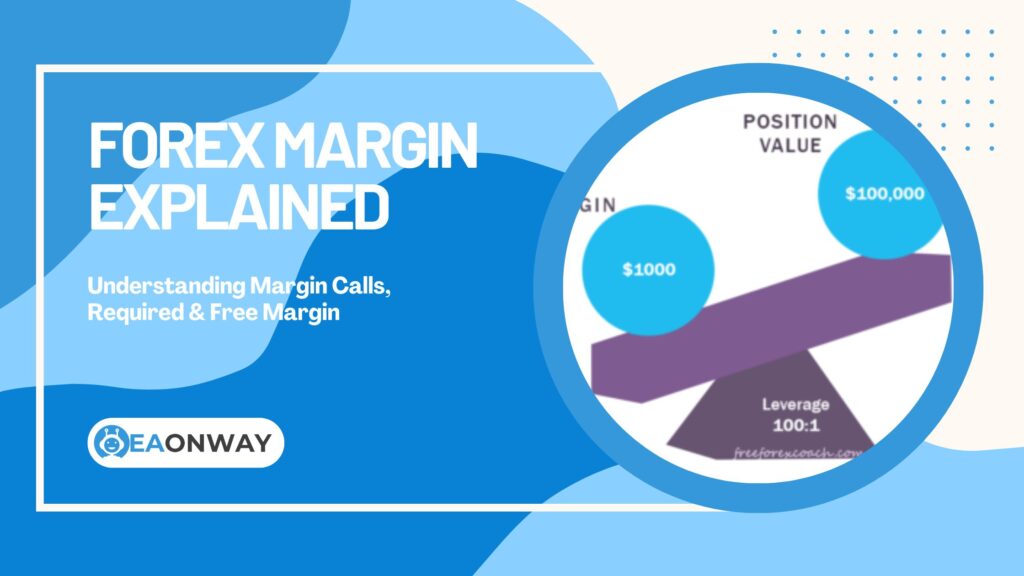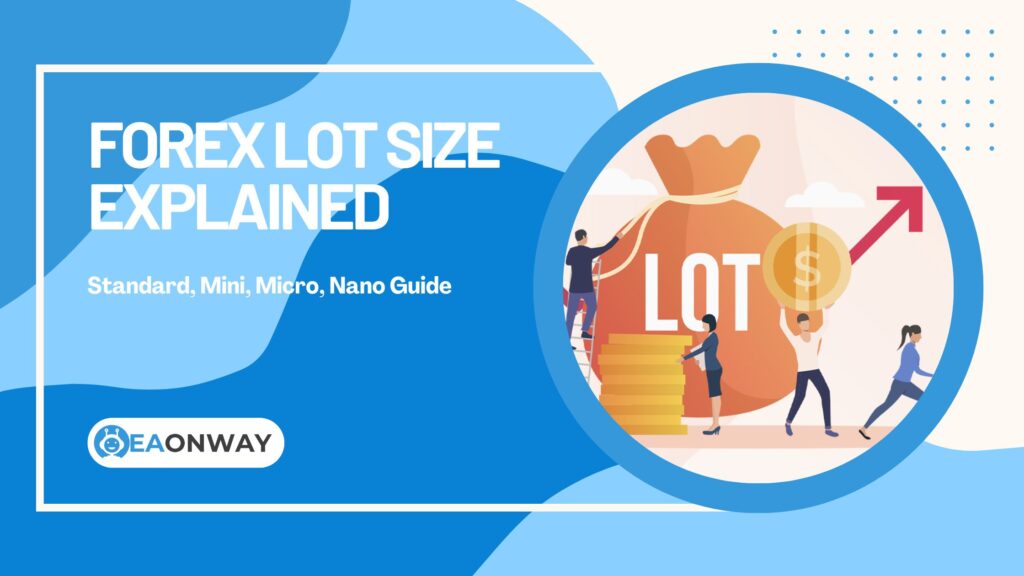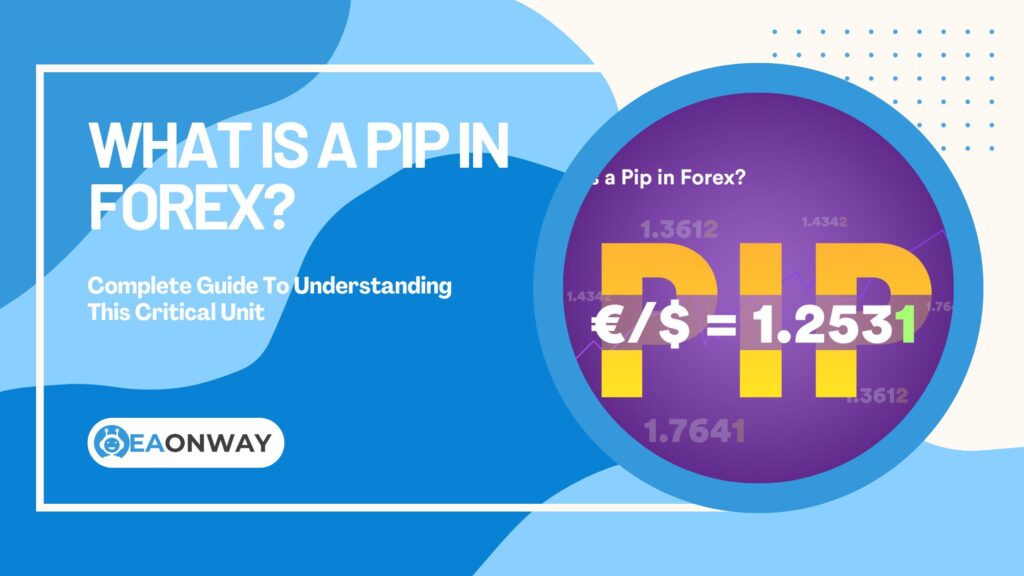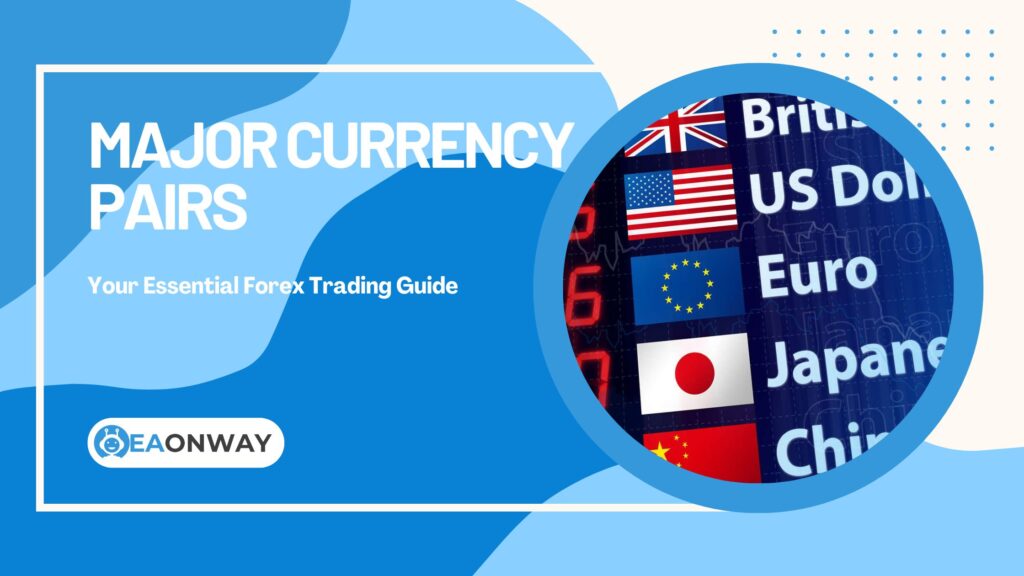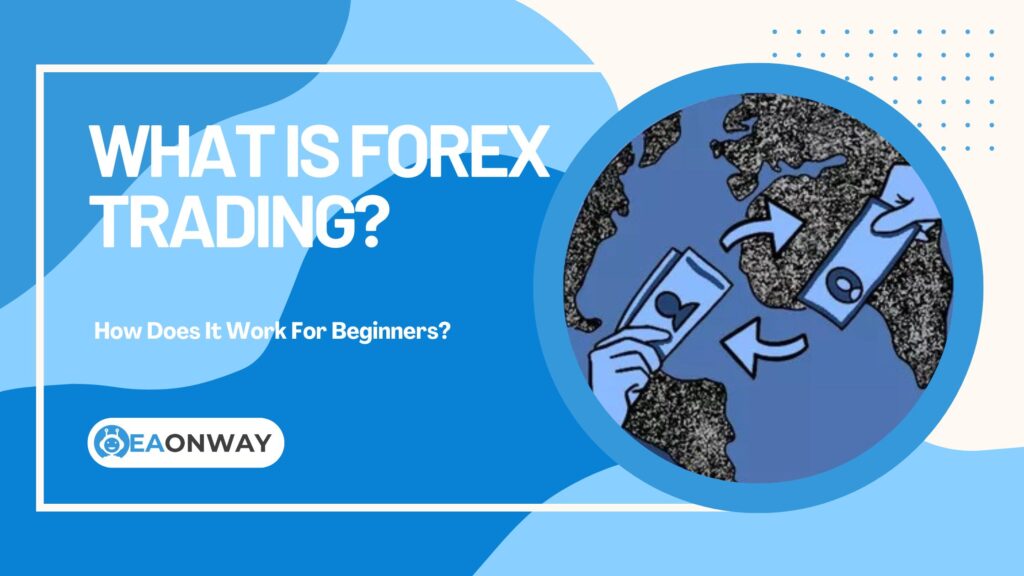Forex Market Explained: How Currency Trading Really Works
Have you ever wondered how money moves across borders, or how the value of one currency shifts against another seemingly overnight? The Forex market, the largest financial market globally, is where these exchanges happen, influencing everything from international trade to the price of imported goods. Understanding this complex, decentralized marketplace is the first crucial step for anyone considering participating, whether through manual trading or exploring automated solutions like Forex Expert Advisors (EAs).
This article delves deep into the mechanics of the foreign exchange market. We’ll break down exactly what it is, how currency pairs function, who the key players are, and what makes prices move. You will gain clarity on essential concepts like reading quotes, understanding pips and lots, and the critical roles of leverage and margin. Crucially, we will objectively explore the inherent risks involved, aiming to provide a solid foundation of knowledge and help you navigate away from unrealistic expectations often associated with currency trading.
Key Takeaways: Understanding the Forex Landscape
Here’s a quick summary of the essential points about how the Forex market operates:
- Global & Decentralized: It’s not a single physical exchange but a vast electronic network connecting major financial centers worldwide (Over-the-Counter or OTC market).
- Constant Operation: The market runs 24 hours a day, five days a week, following the sun across different time zones (Sydney, Tokyo, London, New York).
- Currency Pairs: Trading always involves exchanging one currency for another (e.g., EUR/USD). Prices reflect the value of the base currency relative to the quote currency.
- Major Participants: Central banks, large commercial/investment banks, hedge funds, corporations, Forex brokers, and retail traders all interact within this ecosystem.
- Price Drivers: Exchange rates fluctuate based on economic data (interest rates, inflation), political events, central bank policies, and overall market sentiment.
- Key Terminology: Understanding pips (price movement), lots (trade size), bid/ask spread (transaction cost), leverage (borrowed capital), and margin (deposit required) is vital.
- High Risk: Leverage significantly amplifies both potential profits and, more importantly, potential losses. Forex trading involves substantial risk, and losing your invested capital is a real possibility.
Understanding the Forex Market Fundamentally
To truly grasp Forex trading, we must first understand the market’s core nature. It’s unlike traditional stock markets with centralized exchanges.
What Exactly is the Forex Market?
The Forex market, short for Foreign Exchange market (also known as FX market), is a global, decentralized marketplace where national currencies are traded against one another. It’s the largest and most liquid financial market in the world, facilitating international trade and investment by enabling currency conversion. Its immense scale is staggering; daily trading volume reaches trillions of US dollars. According to the Bank for International Settlements (BIS) Triennial Central Bank Survey, trading in FX markets averaged $7.5 trillion per day in April 2022 (Source: BIS Triennial Central Bank Survey, 2022). This massive volume underscores its global importance.
Why is the Forex Market Decentralized?
The Forex market is decentralized, meaning it has no single physical location or central exchange like the New York Stock Exchange. Instead, trading occurs electronically Over-The-Counter (OTC) directly between participants through a global network of banks, financial institutions, and brokers. This structure allows for continuous 24-hour trading as different financial centers around the world open and close. The lack of a central clearinghouse means transactions happen based on established credit relationships primarily within the interbank market, with brokers facilitating access for smaller participants.
How Does Currency Exchange Actually Happen?
Currency exchange in the Forex market fundamentally involves simultaneously buying one currency while selling another. This happens within currency pairs. When you trade EUR/USD, for instance, you are speculating on the direction of the Euro’s value relative to the US Dollar. If you believe the Euro will strengthen, you buy the pair; if you think it will weaken, you sell the pair. These transactions are largely executed electronically through trading platforms provided by Forex brokers, who connect retail traders to the larger interbank market liquidity providers (often major banks).
The Building Blocks: Currency Pairs and Quotes
Understanding how currencies are paired and quoted is essential before placing any trade.
What Are Currency Pairs in Forex?
Currency pairs are the foundation of Forex trading; you always trade one currency against another. A pair consists of a base currency (the first one listed, e.g., EUR in EUR/USD) and a quote currency (the second one, e.g., USD). The price quoted represents how much of the quote currency is needed to buy one unit of the base currency.
Pairs are typically categorized into:
- Majors: Involve the US Dollar (USD) paired with other major currencies (e.g., EUR/USD, USD/JPY, GBP/USD, USD/CHF, AUD/USD, USD/CAD, NZD/USD). These are the most frequently traded and generally most liquid pairs.
- Minors (Crosses): Pair major currencies without involving the US Dollar (e.g., EUR/GBP, EUR/JPY, GBP/JPY).
- Exotics: Pair a major currency with one from a smaller or emerging economy (e.g., USD/TRY – Turkish Lira, EUR/PLN – Polish Zloty). These often have lower liquidity and wider spreads.
How Do You Read a Forex Quote?
A Forex quote always shows two prices: the bid price and the ask price. For example, EUR/USD might be quoted as 1.0850 / 1.0852.
- Bid Price (1.0850): This is the price at which the broker is willing to buy the base currency (EUR) from you in exchange for the quote currency (USD). It’s the price you get if you sell the pair.
- Ask Price (1.0852): This is the price at which the broker is willing to sell the base currency (EUR) to you in exchange for the quote currency (USD). It’s the price you pay if you buy the pair.
The ask price is always slightly higher than the bid price.
What Does the Spread Represent?
The spread is the difference between the ask price and the bid price. In our example (1.0850 / 1.0852), the spread is 0.0002, or 2 pips (we’ll define pips next). This difference represents the broker’s primary cost for facilitating the trade and is a key factor in trading expenses. Wider spreads mean higher transaction costs. Spreads can vary based on the currency pair’s liquidity (major pairs usually have tighter spreads) and market volatility (spreads can widen during major news events or low liquidity periods).
Measuring Moves and Trade Size
Tiny price movements and varying trade sizes are standard in Forex. Understanding pips and lots is crucial for managing trades and risk.
What Are Pips in Forex Trading?
A pip stands for “Percentage in Point” or “Price Interest Point.” It represents the smallest standard unit of price movement for a currency pair. For most pairs quoted to four decimal places (like EUR/USD, GBP/USD), one pip is equal to 0.0001. If EUR/USD moves from 1.0850 to 1.0851, that’s a one-pip move. For pairs involving the Japanese Yen (JPY), like USD/JPY, a pip is typically the second decimal place (0.01). Understanding pip value is vital for calculating potential profit or loss on a trade.
Many brokers now quote fractional pips (sometimes called “pipettes”), which are 1/10 of a pip. This results in five decimal place quotes for most pairs, or three for JPY pairs, allowing for more precise pricing.
How Do Lots Work in Forex?
A lot in Forex trading refers to the size of your trade, measured in units of the base currency. Standard lot sizes are:
- Standard Lot: 100,000 units of the base currency.
- Mini Lot: 10,000 units of the base currency.
- Micro Lot: 1,000 units of the base currency.
- Nano Lot: 100 units of the base currency (not offered by all brokers).
The lot size directly impacts the value of each pip movement and thus the potential profit or loss. A one-pip move on a standard lot of EUR/USD is typically worth $10, while on a micro lot, it’s worth $0.10. Choosing the appropriate lot size relative to your account balance is a critical aspect of risk management.
Leverage and Margin: Amplifying Potential and Risk
Leverage and margin are two of the most defining—and riskiest—aspects of retail Forex trading. Understanding them thoroughly is non-negotiable.
What is Leverage in Forex Trading?
Leverage allows traders to control a large position size with a relatively small amount of capital (margin). It’s essentially borrowed capital provided by the Forex broker. Expressed as a ratio (e.g., 100:1, 50:1), it means for every $1 of your own capital, you can control $100 or $50 in the market, respectively. While this magnifies potential profits from small price movements (pips), it equally magnifies potential losses. Leverage significantly increases risk.
For example, with 50:1 leverage, a 2% move against your position would result in a 100% loss of your invested capital. This amplification effect explains why many traders, especially beginners, can quickly deplete their accounts when using high leverage without proper risk management.
How Does Margin Work in Forex?
Margin is not a fee; it’s the amount of your own capital required by the broker to open and maintain a leveraged trading position. It acts as a good faith deposit.
- Required Margin: The specific amount needed to open a position (e.g., with 100:1 leverage, you need 1% margin, so $1,000 is required to open a $100,000 standard lot position).
- Used Margin: The total amount of margin currently tied up in open positions.
- Free Margin: The difference between your account equity and used margin, available for opening new positions or absorbing losses.
- Margin Call: If losses reduce your account equity below a certain level (the margin call level set by the broker), you’ll receive a margin call. This requires you to deposit more funds or close losing positions to bring your margin back up. Failure to do so can lead to the broker automatically closing your positions at a loss (liquidation).
Why is Leverage a Double-Edged Sword?
Leverage dramatically increases the potential for profit from small currency fluctuations, which attracts many to Forex. However, it carries extreme risk. A small adverse price movement can result in substantial losses, potentially exceeding your initial deposit if negative balance protection isn’t offered or effective. High leverage means even minor market volatility can trigger margin calls and forced liquidations. Never trade with leverage you don’t fully understand, and always consider the significant potential for loss.
Regulatory bodies often limit leverage available to retail clients precisely because of these risks; for instance, the European Securities and Markets Authority (ESMA) restricts leverage for retail clients on major currency pairs typically to 30:1 (Source: ESMA Measures on CFDs and Binary Options). Always check the regulations applicable in your region.
Who Participates in the Forex Market?
The Forex market isn’t just retail traders; it’s a complex ecosystem with diverse participants influencing currency movements.
Who Are the Major Players Driving the Market?
The Forex market involves various participants with different objectives:
Central Banks: National banks (like the US Federal Reserve, European Central Bank, Bank of Japan) manage their country’s currency, money supply, and interest rates. Their policy decisions and interventions can significantly impact exchange rates.
Commercial and Investment Banks (Interbank Market): These are the biggest players by volume. They trade currencies for their own accounts (proprietary trading), facilitate transactions for large clients (corporations, hedge funds), and act as liquidity providers. The rates set in this interbank market form the basis for overall market pricing.
Large Multinational Corporations: Companies engaged in international trade need to exchange currencies to pay for goods, services, or foreign labor, and to repatriate profits. They often hedge currency risk.
Investment Managers & Hedge Funds: These firms trade currencies speculatively for profit or to hedge international portfolio exposures. Their large transactions can influence short-to-medium term price movements.
Forex Brokers: They act as intermediaries, providing retail traders access to the market via trading platforms. They aggregate prices from liquidity providers (banks) and offer leverage. Brokers make money primarily through the spread or commissions.
Retail Traders: Individual investors like you, trading their own capital, typically through online brokers, speculating on currency fluctuations. While individual volumes are small, collectively, this segment has grown significantly.
What Role Do Forex Brokers Play?
Forex brokers act as the essential link connecting retail traders to the vast global foreign exchange market. They provide the necessary trading platforms (like MetaTrader 4 or 5), access to streaming price quotes, charting tools, and crucially, the leverage that allows individuals to participate with smaller capital amounts.
Brokers aggregate liquidity from various providers (often large banks) to offer competitive bid/ask spreads, executing buy and sell orders on behalf of their clients. Depending on their business model, brokers may operate as:
- Market Makers: Creating a market for their clients by taking the opposite side of trades, potentially creating conflicts of interest but often providing more stable pricing.
- ECN/STP Brokers: Passing orders directly to liquidity providers in the interbank market, typically offering more transparent pricing but possibly with variable spreads.
Their role is vital for enabling individual participation in currency trading, as retail traders would otherwise have no direct access to the interbank market where most currency transactions occur.
What Drives Forex Market Movements?
Currency values are constantly shifting based on a complex interplay of economic, political, and psychological factors.
How Do Economic Factors Influence Exchange Rates?
Economic factors are primary drivers of long-term exchange rate trends. Key indicators include:
Interest Rates: Higher interest rates generally attract foreign capital seeking better returns, increasing demand for the currency and potentially strengthening it (and vice-versa). Central bank decisions on rates are closely watched.
Inflation: High inflation typically erodes purchasing power and can lead to currency depreciation. Central banks often raise interest rates to combat inflation, creating complex interactions. Reliable inflation data can be found on national statistics websites or central bank publications [Data Check Needed: General source type, specific link difficult – National Statistics Offices / Central Banks].
Economic Growth (GDP): Strong economic growth often correlates with currency appreciation, reflecting a healthy economy attractive to investment.
Employment Data: Strong job growth can signal economic health and potentially lead to higher interest rates, boosting the currency.
Trade Balance: A consistent trade surplus (exports exceed imports) can increase demand for a nation’s currency.
The relationship between these factors is complex and sometimes counterintuitive. For example, while strong economic data typically strengthens a currency, if it decreases the likelihood of stimulus measures, the currency might paradoxically weaken.
Can Political Events Affect Currencies?
Yes, political stability and significant events heavily influence currency values. Elections, changes in government policy, geopolitical tensions, trade disputes, and regulatory changes can all cause sharp volatility in the Forex market. Uncertainty often leads investors to move capital away from a currency perceived as risky, causing it to weaken. Conversely, positive political developments or reforms can boost confidence and strengthen a currency.
Brexit provides a classic example – the British Pound (GBP) experienced significant volatility throughout the Brexit process, with sharp drops following the initial referendum and during periods of heightened uncertainty about the UK’s future trading relationships.
What is Market Sentiment’s Role?
Market sentiment refers to the overall attitude or feeling of traders towards a particular currency or the market as a whole. It’s often driven by news, economic data releases, and political events. During periods of high uncertainty or fear (“risk-off”), investors tend to favor perceived “safe-haven” currencies like the US Dollar, Swiss Franc, or Japanese Yen. Conversely, during optimistic periods (“risk-on”), investors may favor currencies associated with higher growth or yield.
Sentiment can cause short-term price swings that may not always align with underlying economic fundamentals. This psychological component of trading explains why markets sometimes react irrationally or in exaggerated ways to news events, and why technical analysis (the study of price patterns and market behavior) can be useful in predicting short-term movements despite being disconnected from fundamental economic factors.
Understanding Forex Market Hours
One unique aspect of Forex is its near-continuous operation during the week.
Is the Forex Market Really Open 24 Hours?
Yes, the Forex market operates 24 hours a day, but only five days a week (roughly from Sunday evening GMT to Friday evening GMT). It follows the global business day: starting with the Sydney session, followed by Tokyo, then London, and finally New York, before Sydney opens again. This continuous cycle means trading opportunities exist around the clock during the trading week. There is no single closing bell.
The 24-hour nature of the market is possible because currencies are traded globally across different time zones. When the trading day ends in New York, it begins in Sydney and Tokyo, creating a continuous market. However, it’s important to note that the market does close for weekends, typically from Friday evening to Sunday evening (Eastern Time).
When is the Best Time to Trade Forex?
The “best” time often depends on the strategy and currency pairs traded, but periods of session overlap generally offer the highest liquidity and volatility. The most significant overlap occurs when the London and New York sessions are both open (roughly 8:00 AM to 12:00 PM EST or 1:00 PM to 5:00 PM GMT). During this window, trading volume peaks as two major financial centers are active, often leading to tighter spreads and larger price movements, which some traders prefer.
Different currency pairs may exhibit more activity during particular sessions:
- European pairs (like EUR/USD, GBP/USD) often see most activity during London hours
- Asian pairs (like USD/JPY, AUD/USD) may be more active during Asian sessions
- Cross-pairs (like EUR/GBP) might be most liquid when the relevant financial centers are open
Trading during single session times (e.g., only the Asian session) might offer different characteristics suitable for other strategies, such as range trading during typically quieter periods. Your specific trading approach should dictate which market hours are most advantageous for you.
Trading Analysis Methods in Forex
Forex traders typically use two main approaches to analyze the market and make trading decisions.
How Does Fundamental Analysis Work in Forex?
Fundamental analysis in Forex involves evaluating currencies based on economic, financial, and geopolitical factors that might influence their value. Traders who use this approach closely monitor:
- Economic indicators and reports (GDP, employment data, retail sales)
- Central bank policies and interest rate decisions
- Inflation rates and consumer price indices
- Political developments and geopolitical events
- Long-term economic trends and relationships between economies
Fundamental analysts believe that currencies will eventually reflect their “true value” based on the underlying economic strength of their respective countries. This approach is particularly useful for long-term trading strategies and for understanding major market moves.
What is Technical Analysis in Currency Trading?
Technical analysis involves studying price charts and market statistics to identify patterns and predict future price movements. This approach assumes that:
- Historical price patterns tend to repeat
- Prices move in trends that can be identified
- Market psychology is reflected in price action
Technical traders use various tools including:
- Chart patterns (head and shoulders, double tops/bottoms)
- Support and resistance levels
- Moving averages and other indicators (RSI, MACD, Stochastic)
- Trend lines and channels
- Volume analysis (where available)
Many traders combine both fundamental and technical approaches for a more comprehensive market view. For example, they might use fundamentals to determine the long-term direction and technicals to fine-tune entry and exit points.
Final Thoughts on How the Forex Market Works
Navigating the Forex market begins with understanding its fundamental mechanics. We’ve explored its decentralized nature, the crucial role of currency pairs and quotes, the mechanics of pips and lots, and the double-edged sword of leverage and margin. We’ve also identified the diverse participants shaping the market and the economic, political, and sentiment-driven forces causing exchange rates to fluctuate across the 24-hour trading day.
Grasping these concepts—how Forex works—is paramount before considering any involvement, especially automated systems. The complexity and inherent risks cannot be overstated. While the potential for automation through Forex EAs exists, it does not eliminate the need for foundational knowledge or the significant risks involved in currency trading.
The Forex market offers accessibility and opportunity, but also presents substantial challenges. Success requires not just technical understanding but also psychological discipline, effective risk management, and realistic expectations. Approach this market with education, caution, and a clear understanding that consistent profitability requires time, experience, and continuous learning.
Important Risk Warning
The content provided in this article is for educational and informational purposes only and does not constitute financial or investment advice. Forex (Foreign Exchange) trading carries a high level of risk and may not be suitable for all investors. Leverage can work against you as well as for you. Before deciding to trade Forex, you should carefully consider your investment objectives, level of experience, and risk appetite.
There is a possibility that you could sustain a loss of some or all of your initial investment, and therefore you should not invest money that you cannot afford to lose. Many retail investors lose money trading foreign exchange. Seek advice from an independent financial advisor if you have any doubts. EaOnWay.com does not provide investment advice or recommendations.

